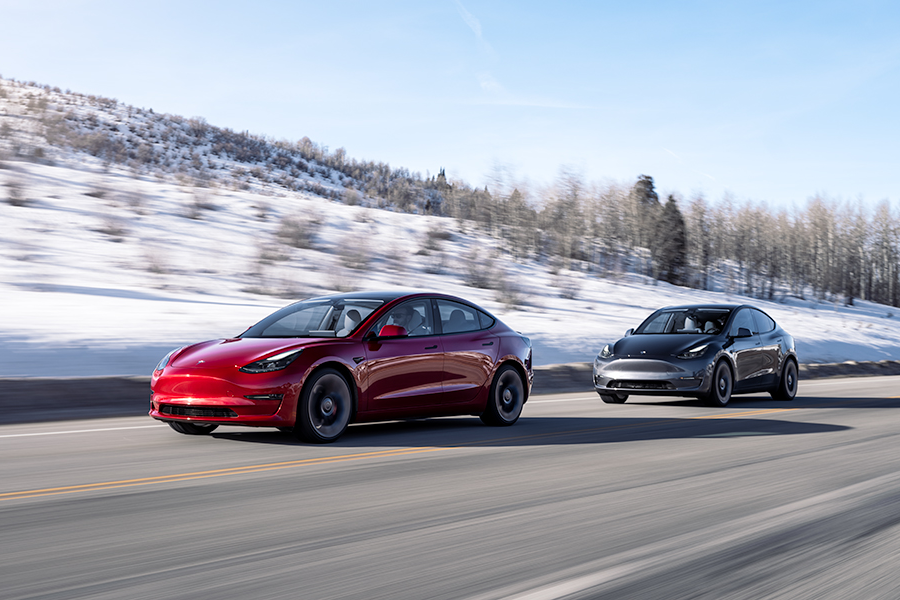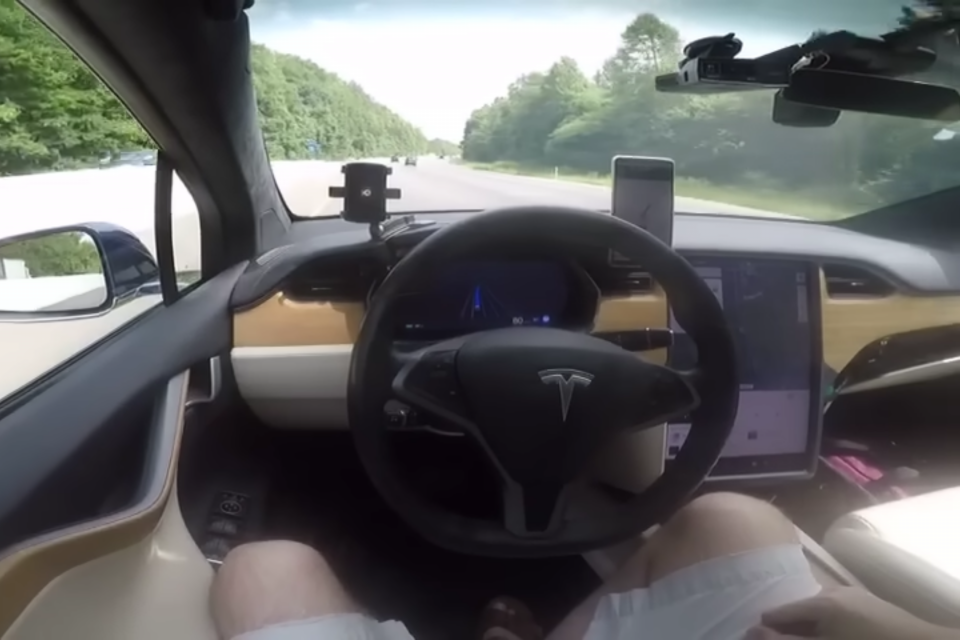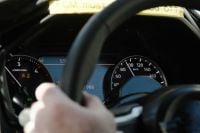
News Editor
A software hacker has discovered a hands-free option for Tesla’s controversial Full Self-Driving (FSD) beta driver assist system.
A Twitter user who uses the handle @greentheonly found and enabled the setting in a Tesla and tested it, nicknaming it ‘Elon Mode’.
The hacker found the car didn’t require any attention from them while using FSD, removing the usual “nags” that remind you to touch the steering wheel that exist with both FSD and Autopilot.
These typically start with a visual symbol, before escalating to a beeping noise, and then eventually disabling the system entirely.
Tesla has also introduced an interior camera to ensure drivers are looking ahead. The Model X tested in “Elon Mode” is a 2020 model and lacks this camera.
CEO Elon Musk had previously said the nags would be removed as part of a January update, at least for users with more than 10,000 miles using FSD Beta.
They weren’t, and following his tweet the US National Highway and Traffic Safety Administration (NHTSA) told Reuters it was contacting Tesla to get more information.
A subsequent tweet by Musk in April said the nags were being gradually reduced.
“Unless you work at Tesla, or otherwise have access to relevant databases at the company,” @greentheonly told CNBC, there’s no way to know how many cars have “Elon Mode” available today.
The hacker also commented on the performance of FSD in this mode, noting “less intense” braking, and seemingly random, “short-sighted” lane changes on highways, deeming its performance off of highways to be considerably worse than on.
Musk said last month FSD Beta 12 is due “maybe later this year”, and confirmed version 12 of the technology “won’t be beta”.
This suggests the company is confident enough in the technology to no longer want to use the beta tag.
Musk didn’t confirm when Version 12 will drop. FSD Beta is currently at version 11.3.6.
FSD Beta first launched to select US owners in October 2020, before being opened in November 2022 to all North American owners who purchased the option.
This feature allows Tesla vehicles to drive autonomously in most driving scenarios. It requires “active driver supervision and do[es] not make the vehicle autonomous” though, according to the Tesla website.
It can suggest and execute lane changes and steer within lanes with adaptive cruise activated, as well as identify stop signs and traffic lights and slow and stop the vehicle accordingly.
Tesla is also continuing to work on Autosteer functionality for city streets.
Musk said back in 2019 that by the middle of 2020 the company would “have over a million Tesla cars on the road with full self-driving hardware” that would be so reliable the driver “could go to sleep”.
As recently as this February, however, Tesla had to roll out an over-the-air update as its FSD Beta “could potentially infringe upon local traffic laws or customs while executing certain driving manoeuvres”.
Musk said last year he didn’t expect regulatory approval for Tesla’s autonomous driving technology until 2023.
Controversially, even as Tesla is pursuing increasingly more autonomous driving, it has been phasing out radar and sensors and avoiding LiDAR in favour of its camera-based Tesla Vision system.

Tesla has been courting controversy not just for beta-testing FSD on public roads, but also for the effectiveness of its Autopilot technology.
The company is reportedly the subject of a criminal investigation from the U.S. Department of Justice, with three people familiar with the matter telling Reuters last year the probe was launched following more than a dozen crashes – some fatal – where Tesla’s Autopilot system was active.
Prosecutors in Washington D.C. and San Francisco are reportedly examining whether Tesla misled consumers, investors, and regulators by making unsupported claims about the capability of its driver assist technology.
This probe represents a more serious level of scrutiny than previous probes as it could lead to criminal charges against the company or individual executives, the sources said, and the DOJ could also seek civil sanctions.
The company confirmed earlier this year the DOJ had requested documents on its Autopilot and FSD features.

The Autopilot probe is currently competing with two other DOJ investigations involving Tesla, one source told Reuters, adding there’s still a great deal of work to do and no decision is imminent.
This is in addition to two ongoing investigations by the NHTSA.
One of these is in the engineering analysis stage and is looking at crashes with stationary emergency vehicles, while the other is looking at phantom braking reports.
The agency confirmed it’s investigating the 17th fatal crash involving Autopilot, after a Model S collided with a parked fire truck in Contra Costa County, California in February.
Shareholders also recently filed a proposed class action suit against Tesla in federal court in San Francisco, arguing they had been defrauded by the company with false and misleading statements on technology that “created a serious risk of accident and injury”.
Trusted Reviews, Smarter Choices, Better Prices
Where expert car reviews meet expert car buying – CarExpert gives you trusted advice, personalised service and real savings on your next new car.
William Stopford is an automotive journalist with a passion for mainstream cars, automotive history and overseas auto markets.
You might also like


Damion Smy
Hyundai teases Staria EV ahead of likely January reveal
1 Hour Ago


Damion Smy
2026 KGM Musso ute images leaked
5 Hours Ago


Damion Smy
Ford Escape PHEV recalled for fire risk
6 Hours Ago


Damion Smy
Ford Transit Custom and Tourneo recalled due to toxic gas leak
7 Hours Ago


Damion Smy
Holden sales record as HSV sells for $1.2 million
7 Hours Ago


Josh Nevett
CarExpert's top five mid-size SUV reviews of 2025
7 Hours Ago







